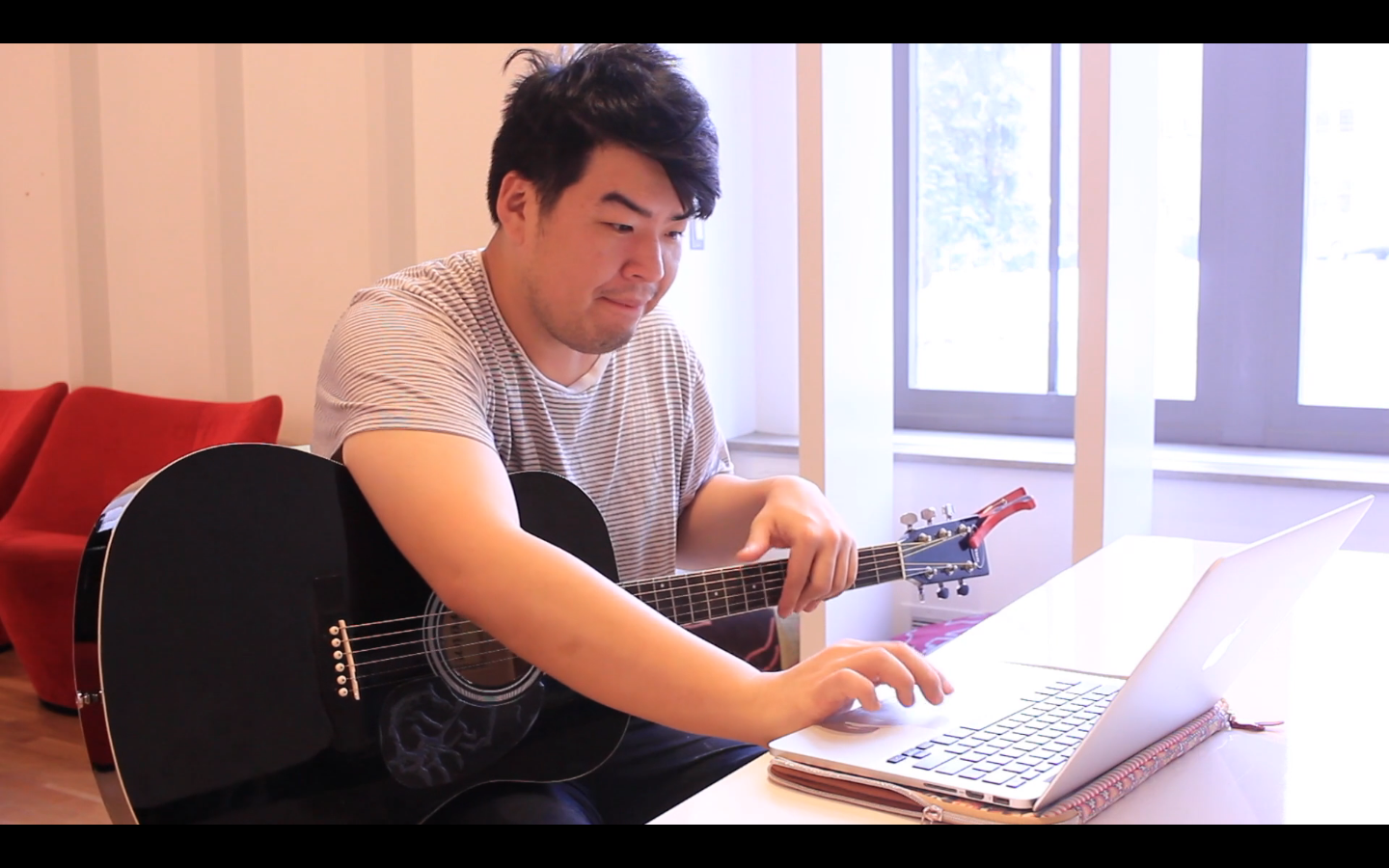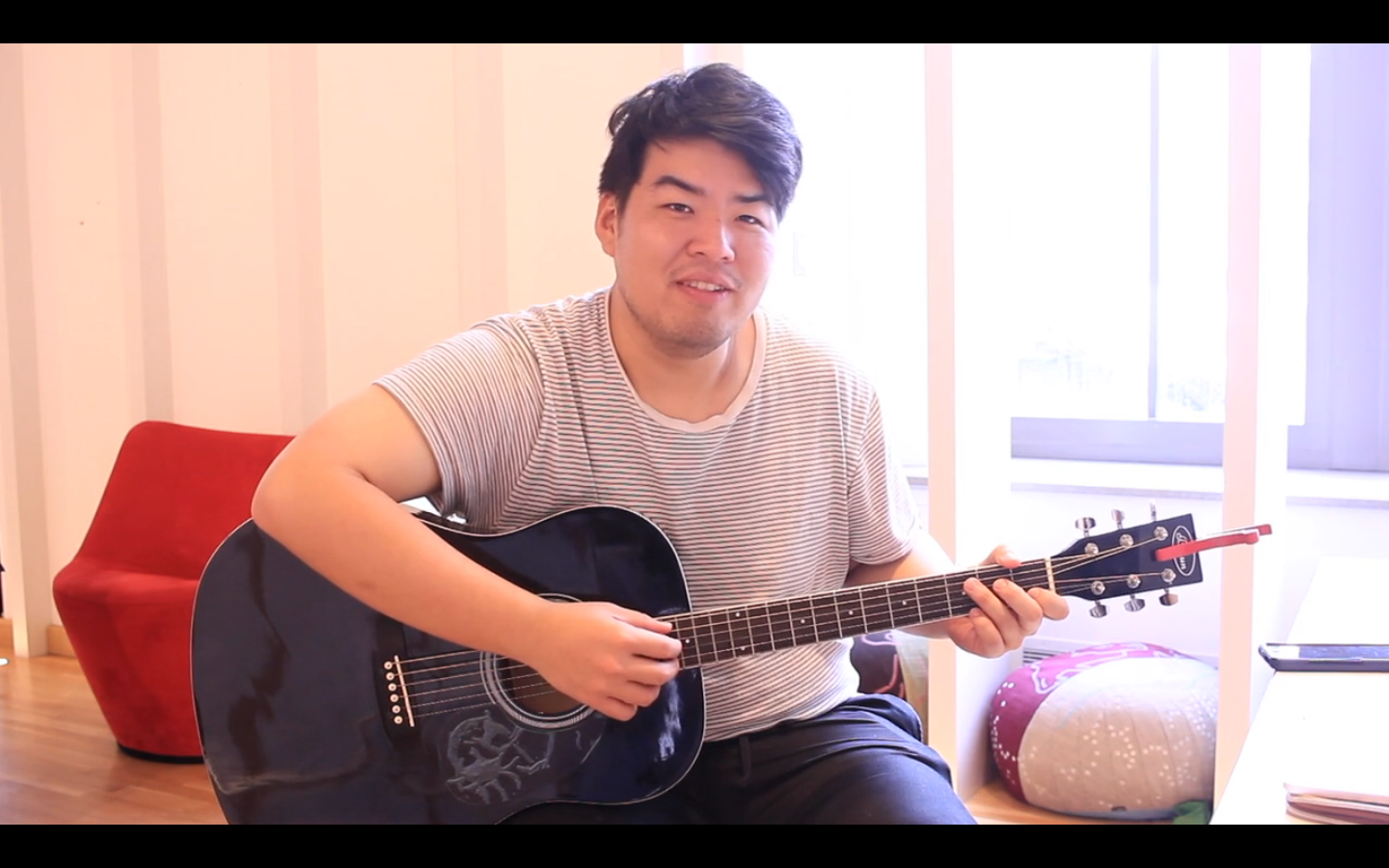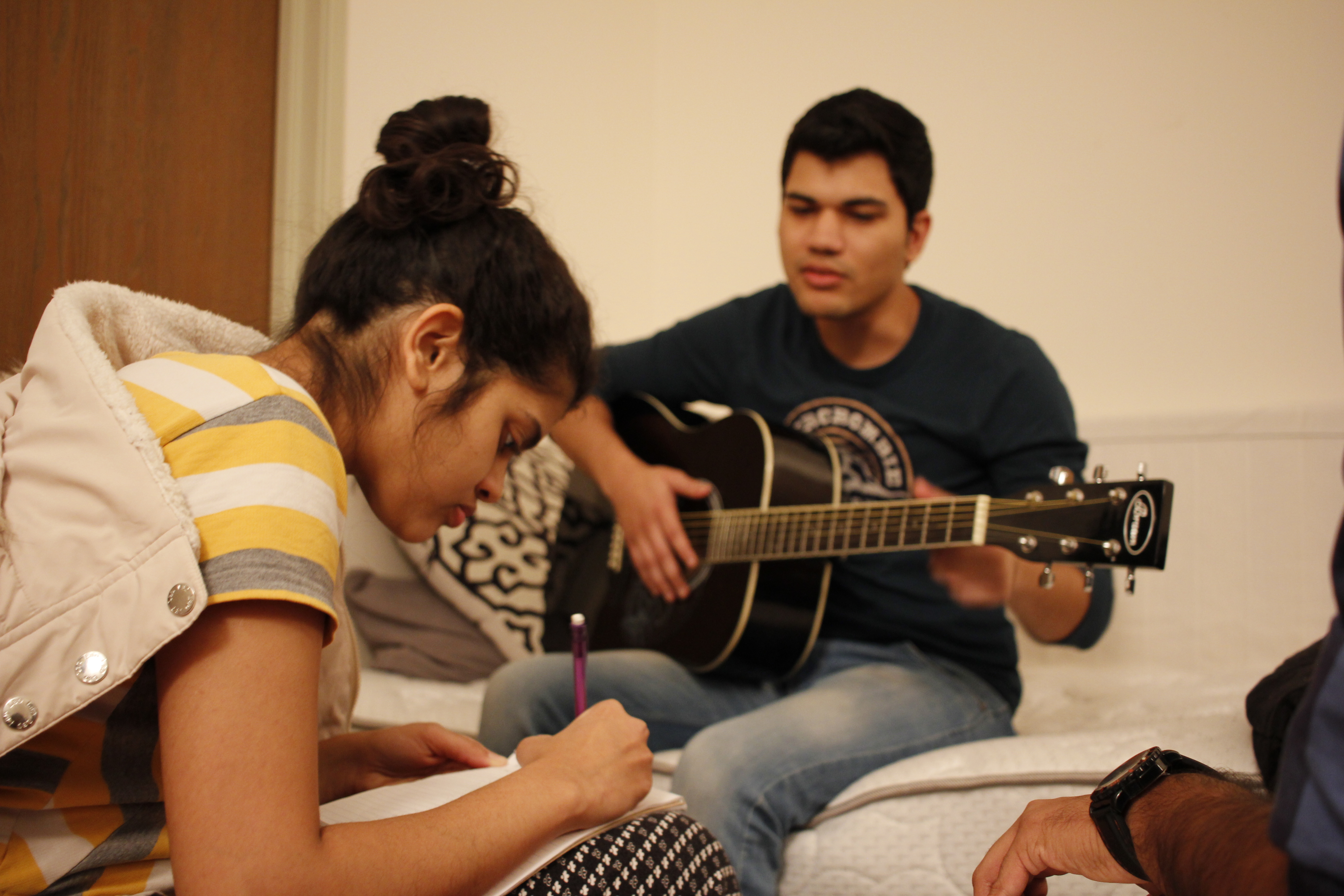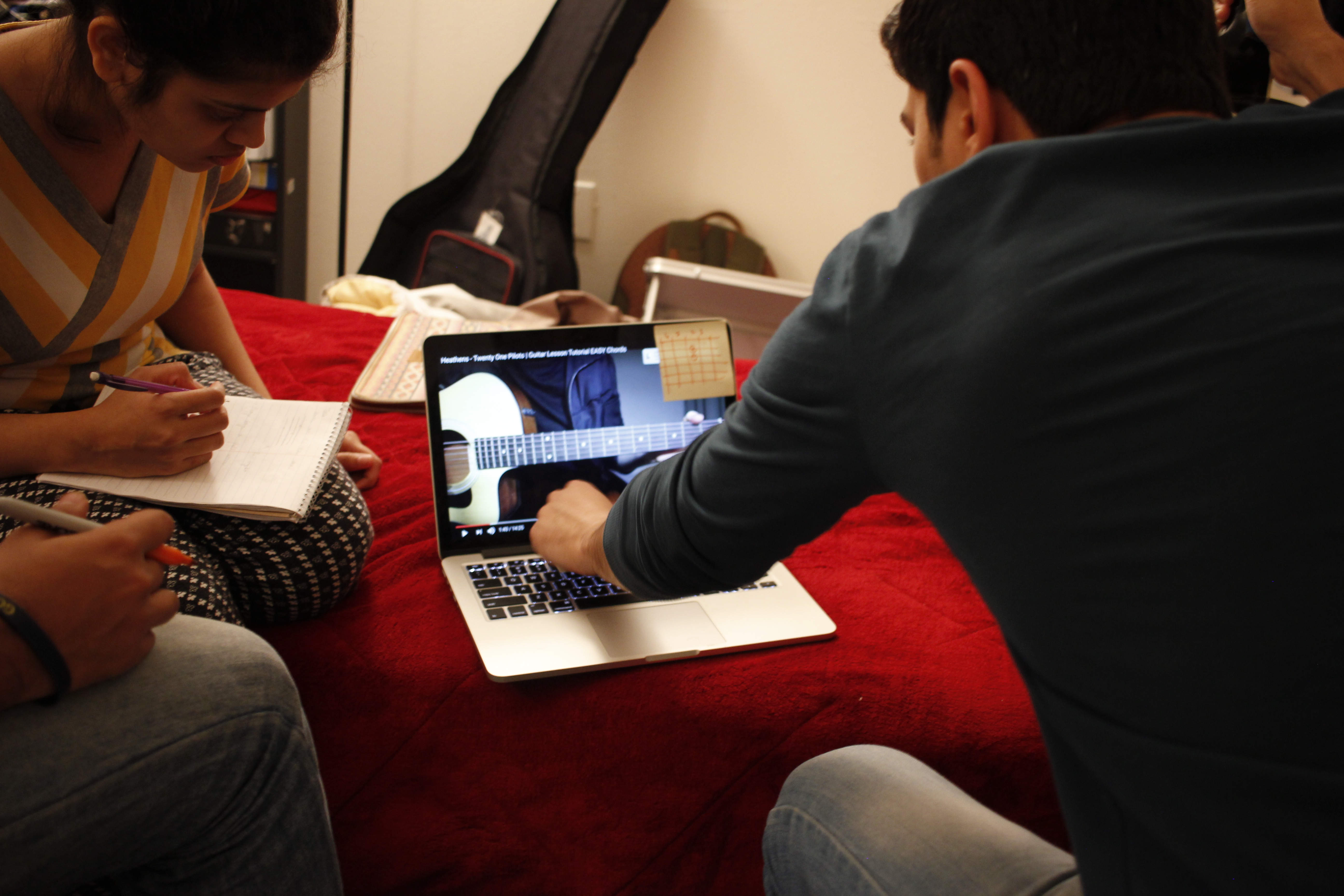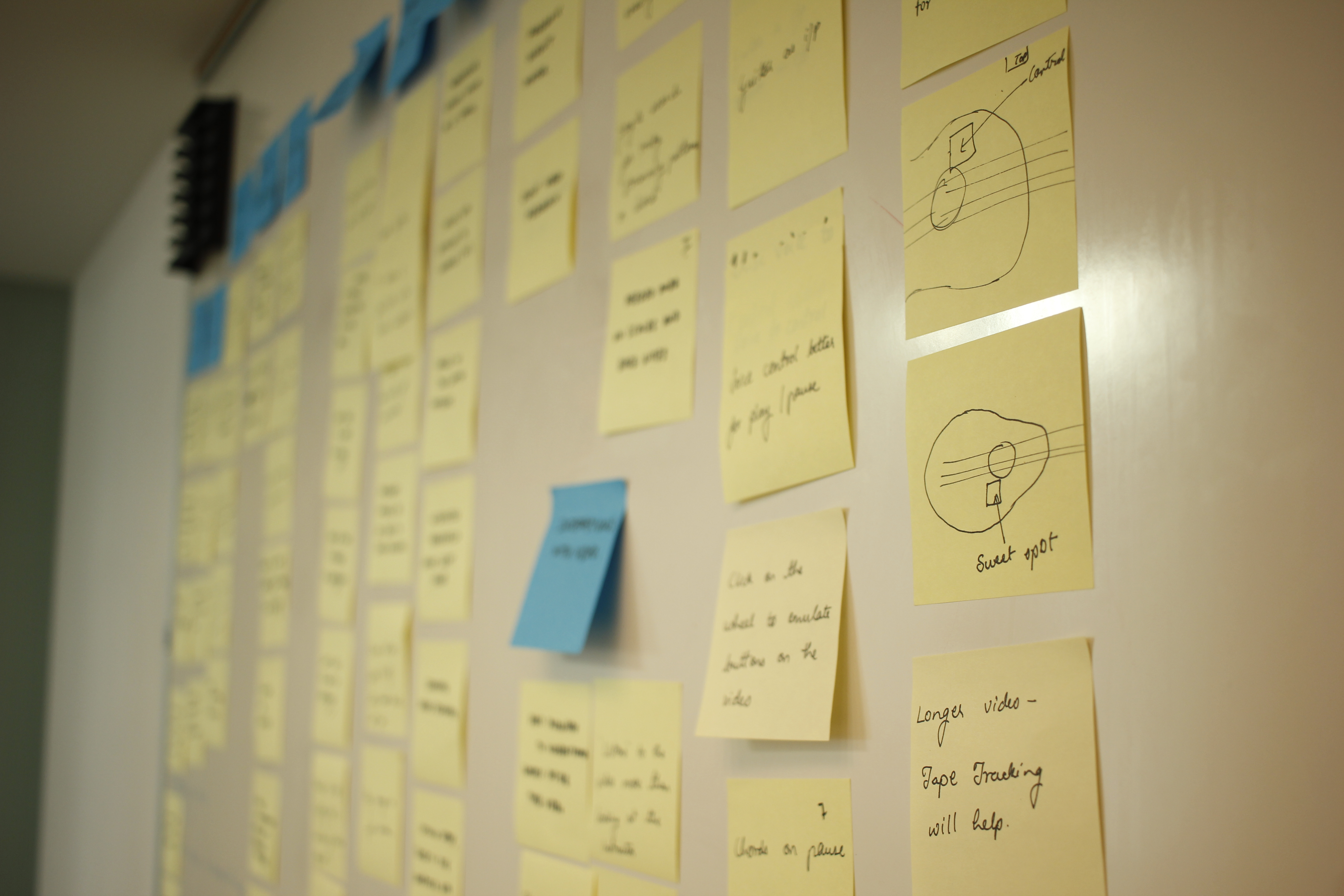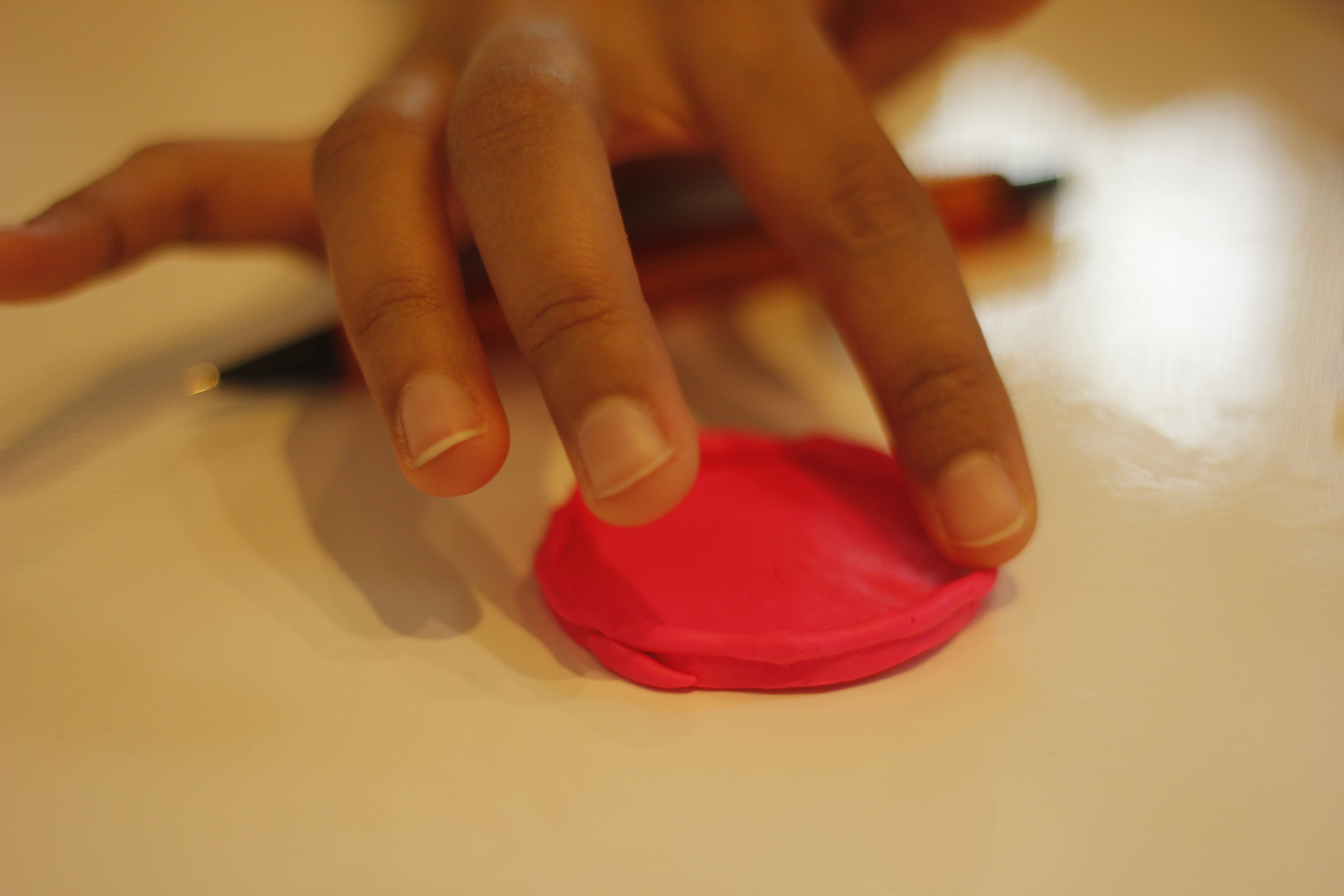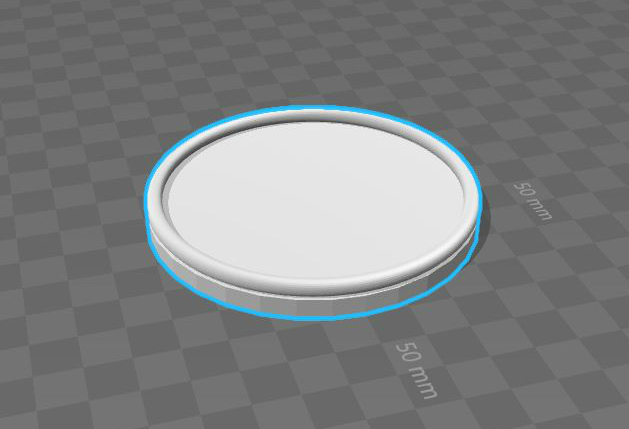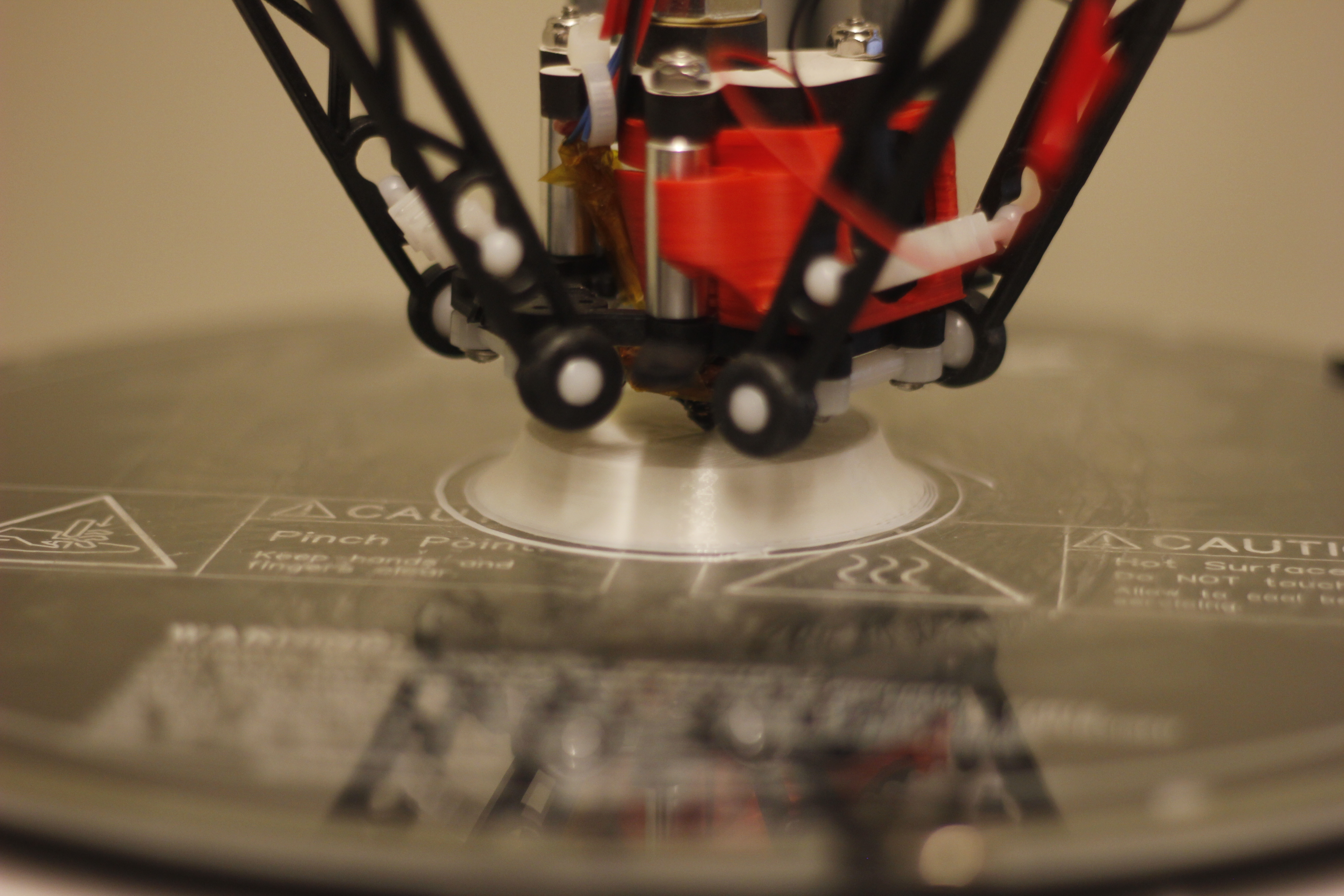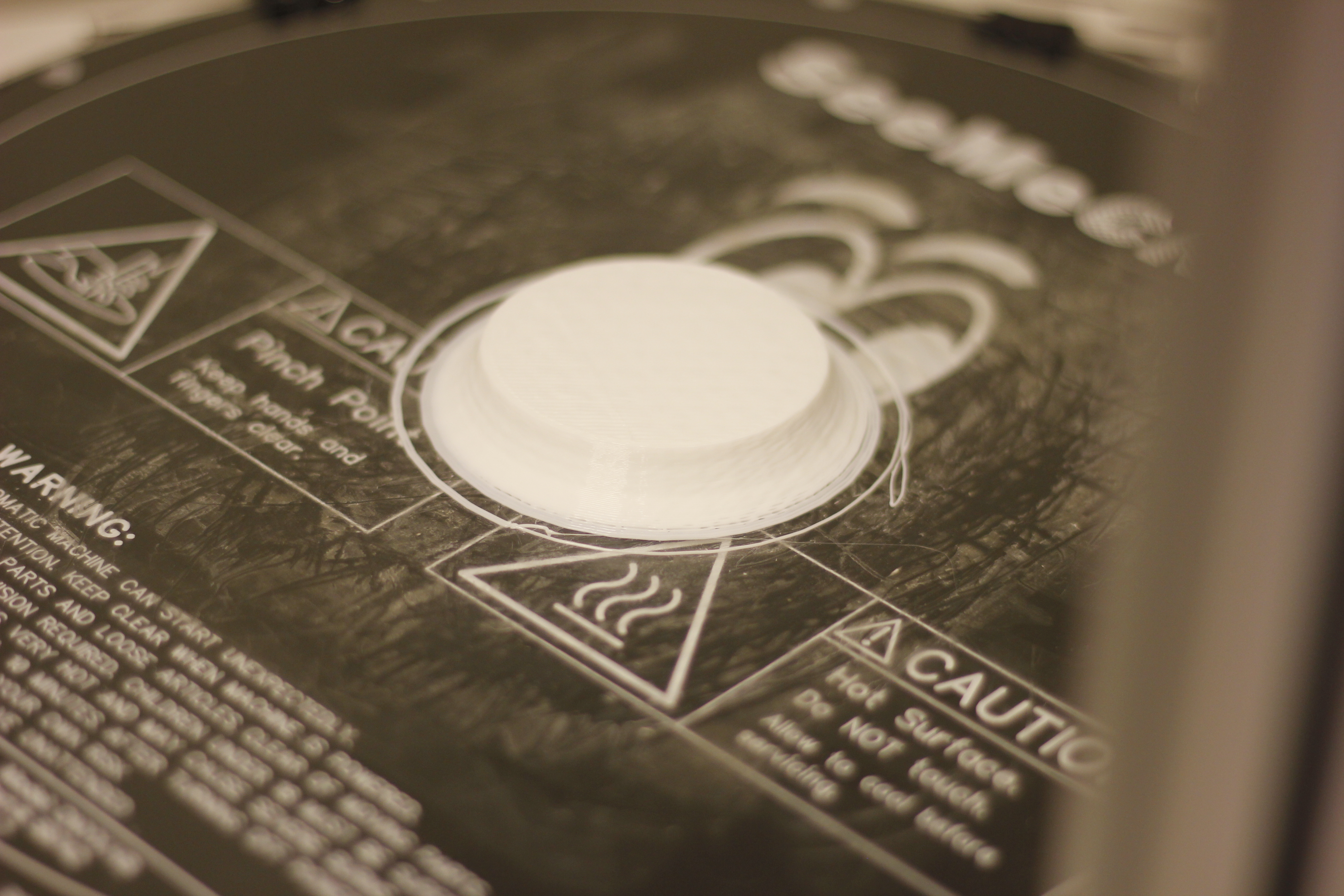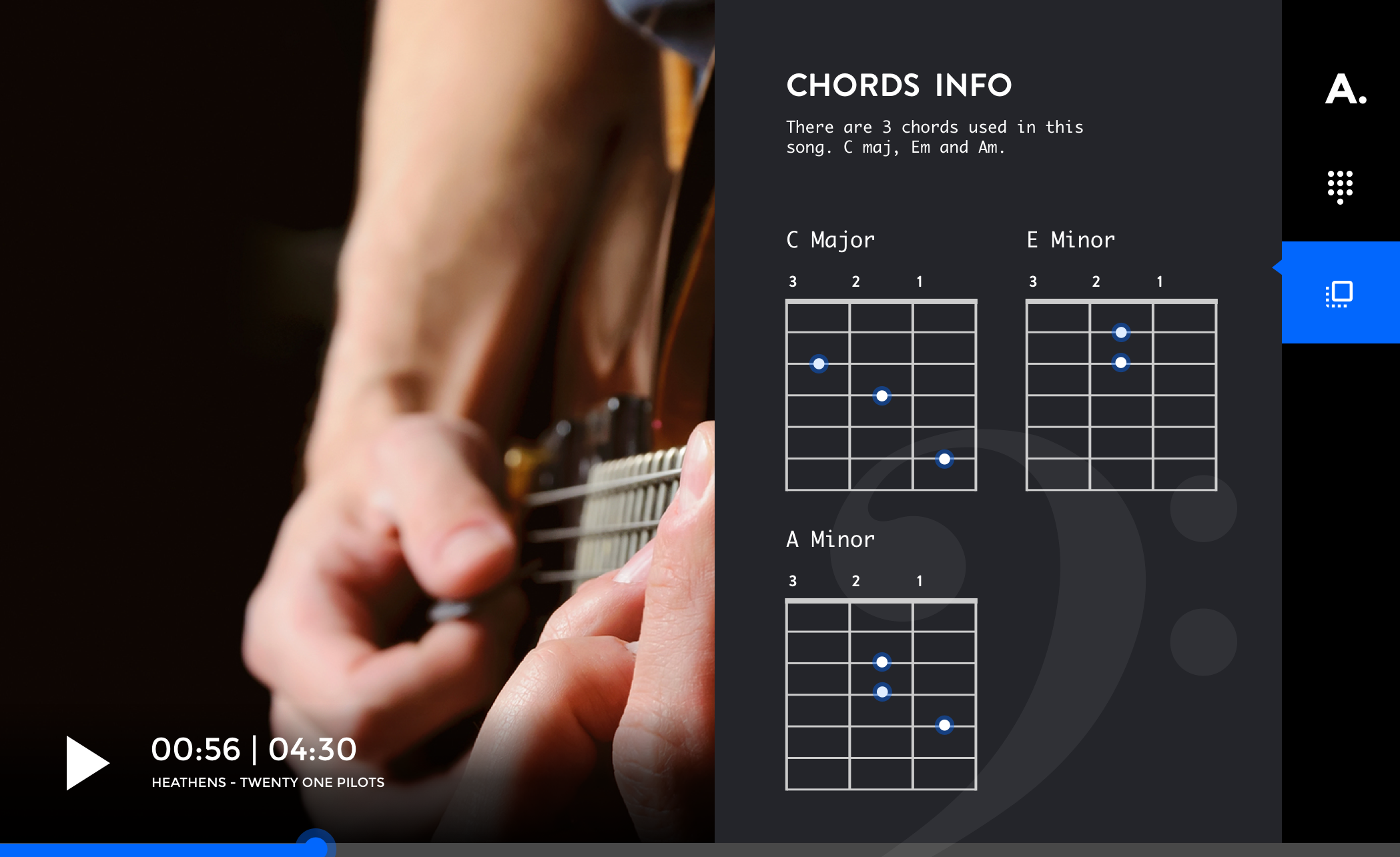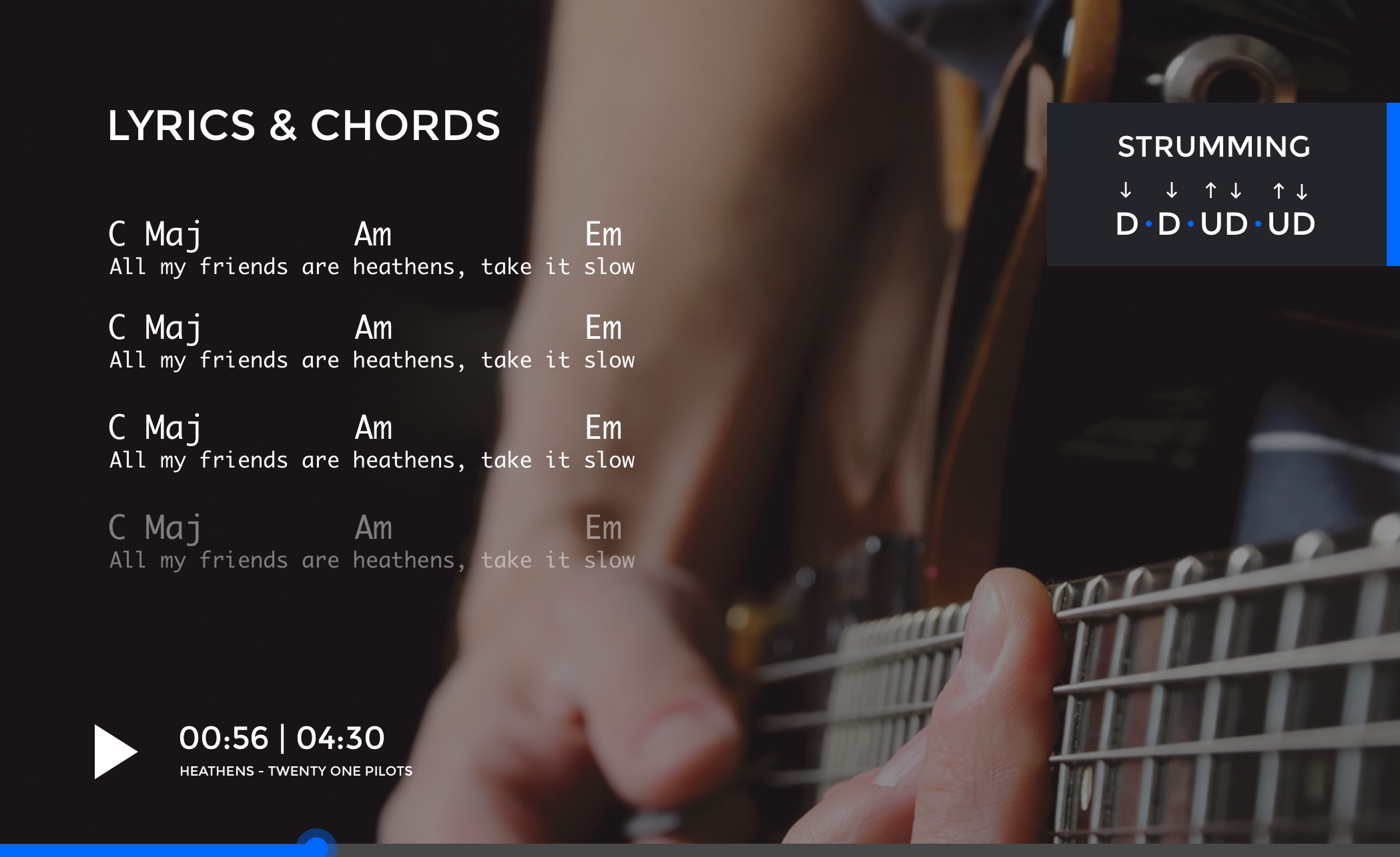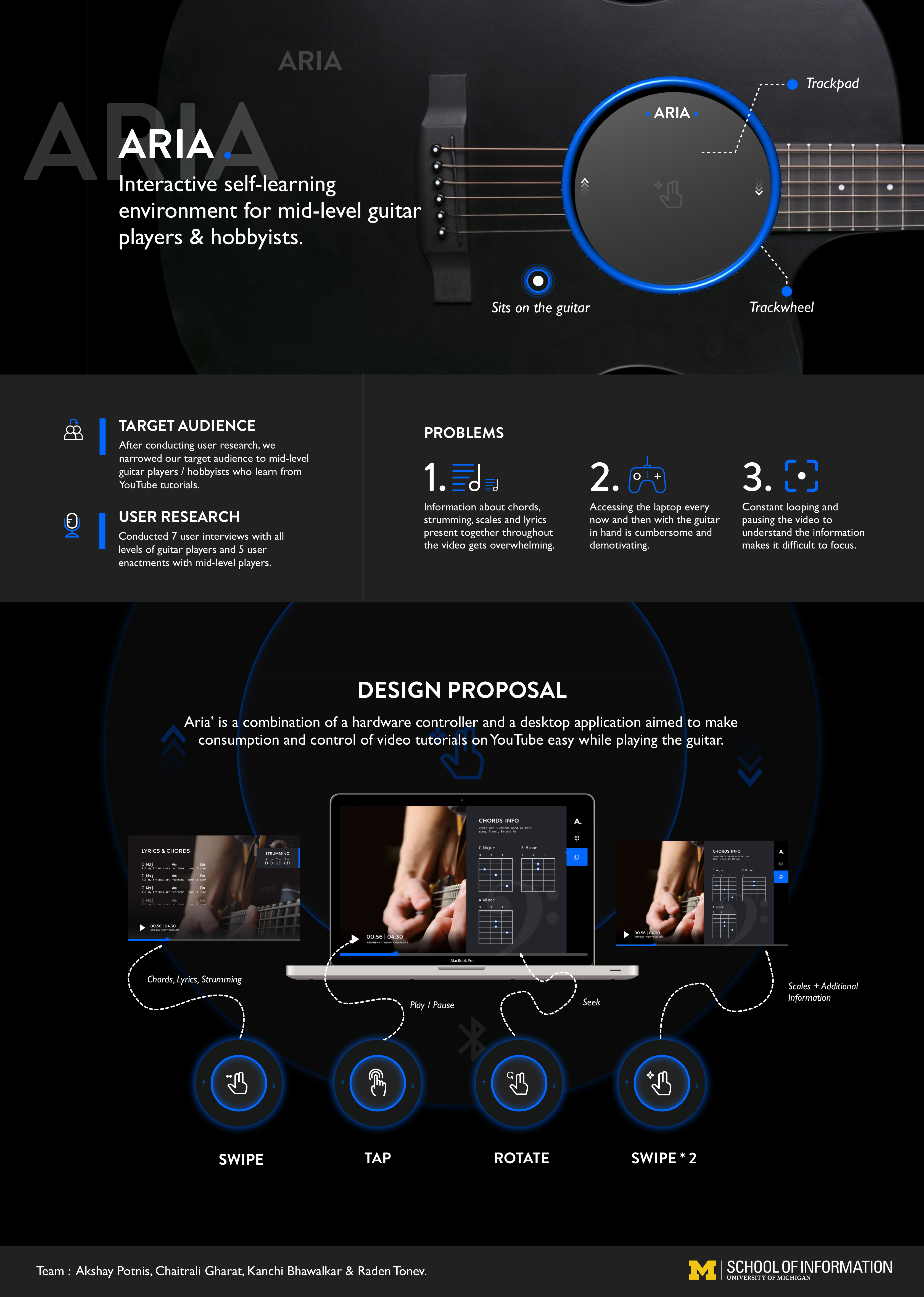Aria 
Product Designer
Interactive self-learning experience for mid-level guitar players & hobbyists, who usually learn from YouTube.
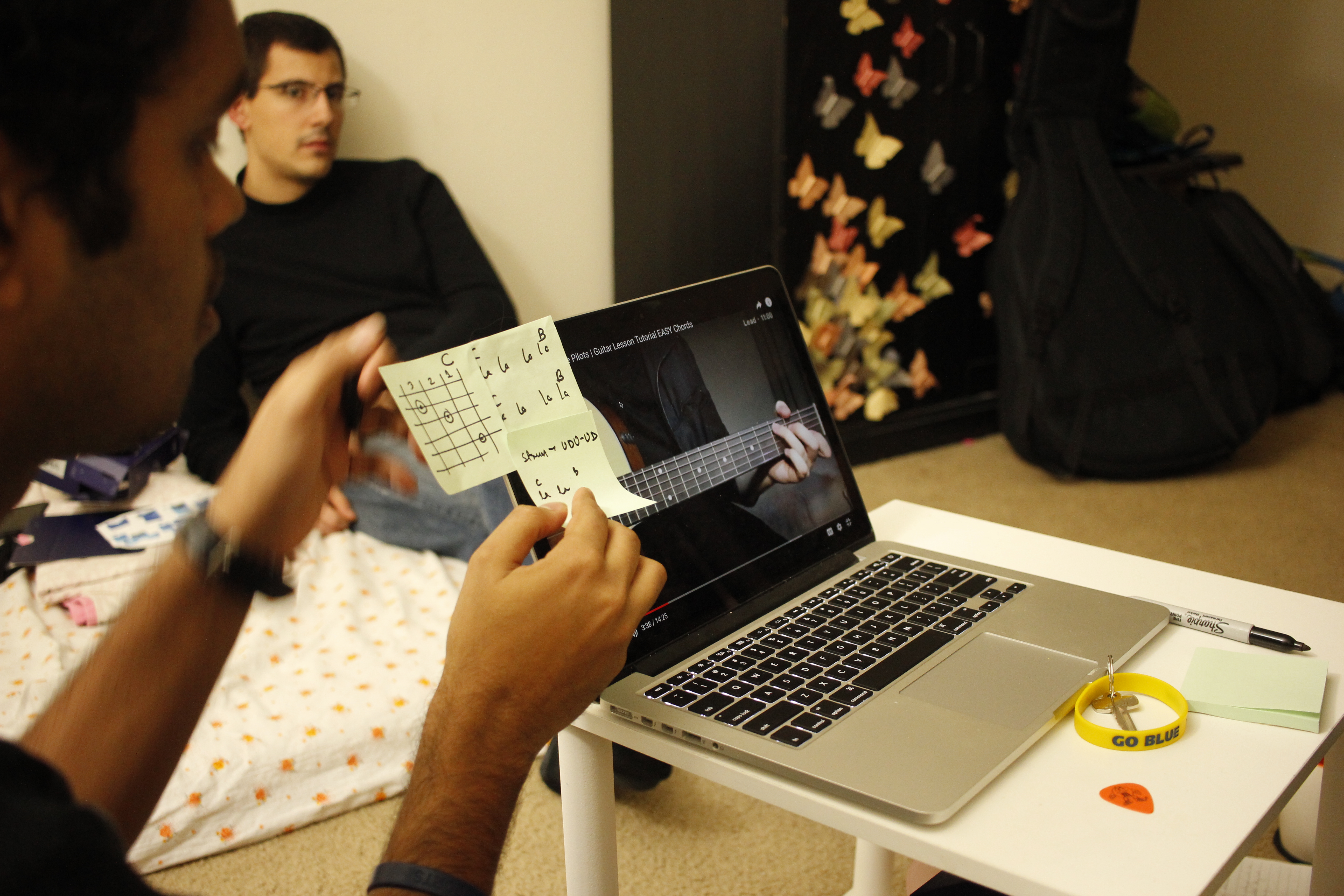
Bridging the gap between online guitar learning and classroom learning
With the spread of online communities, self-learning has become ubiquitous. Though much work has been done to help beginner learners, we identified Mid-level guitarist learners as a group that finds scarce learning resources and tools. The online materials are inconsistent and not personalizable. In addition, the time required to learn on their own, as opposed to having formal education can be significantly longer and could lead to students losing motivation or giving up.
Why is online self learning difficult?
To understand the problems that were faced by independent guitar learners, we intervewed people at different levels of expertise. Some of them learnt in a school while some others were learning on their own. They helped us understand the learning paths that were working and the reasons why some of them gave up. Our secondary research and user interviews showed us that a lot of resources were already present to help beginners and experts. To narrow the scope of our problem, we decided to concentrate on mid-level self-learners.

Research insight
Most self learners prefer using YouTube to learn guitar in their free time.
Putting the users in context using Participatory Design
We knew the most effective solution would be something that resonated best with our users. So, we turned to them for guiding us forward. Our procedure was simple. We asked the participants to learn a song they did not know from YouTube using a device of their choice with a guitar in their hand. We then took a bunch of stickies and drew controls on the fly as the participants wanted.
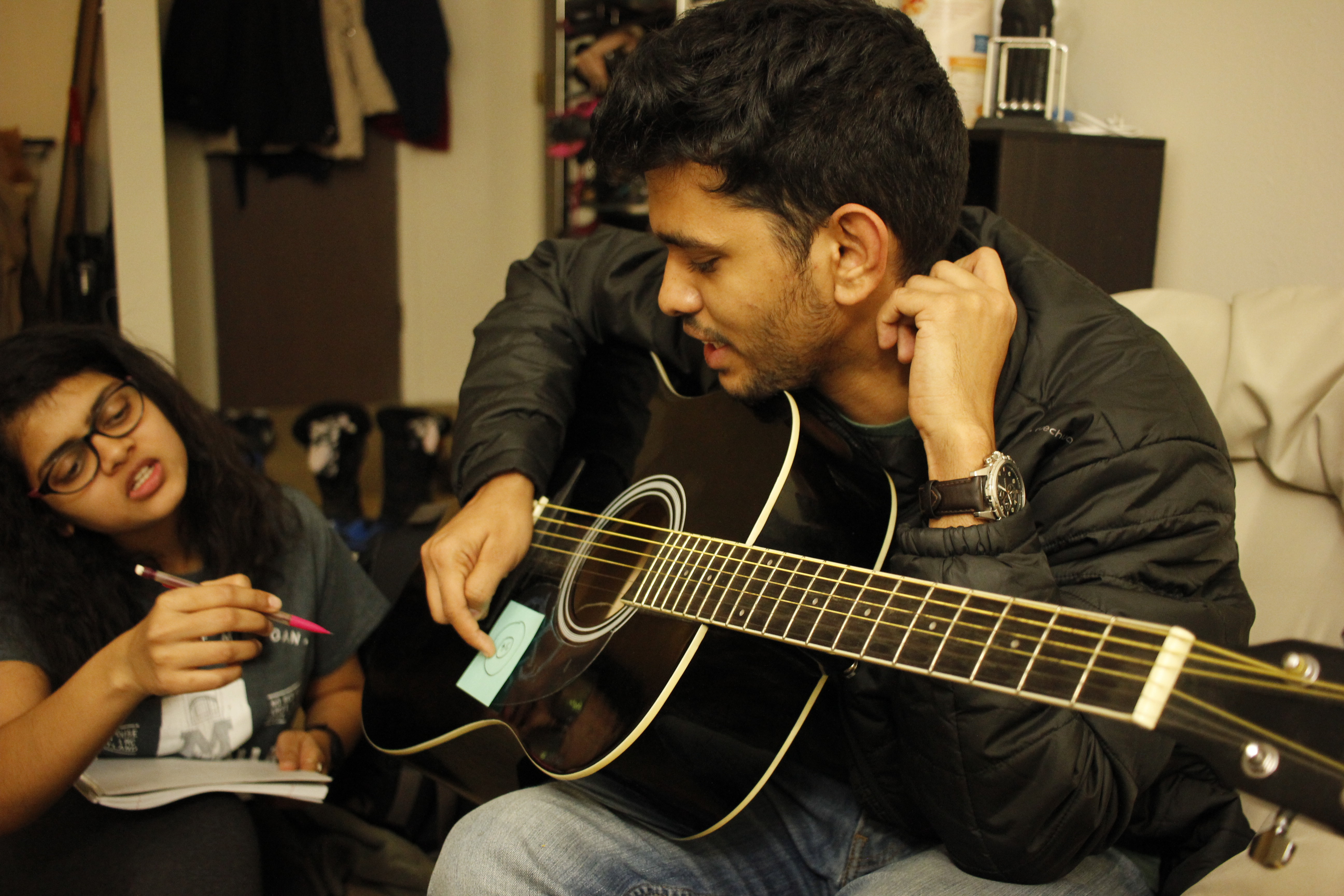
What did the design exercise tell us?
The design exercise helped us capture and observe how users found shortcuts to guide their way through the video lesson. We analyzed the different observations to come up with three important insights.



Design Direction
A desktop application with targeted lesson information and a hardware controller that sits on top of a guitar for easy access and intuitive control.
Brainstorming & Prototyping
We used the design exercise to guide our design directions. Then we mapped and brainstormed on solutions that augmented the outcomes from the exercise as well as took care of problems we found in the initial research.
1. Hardware controller iterations
Aria hardware controller sits on the guitar and helps control the video tutorial easily. This controller is a combination of track-wheel and a trackpad.
2. Conroller - application interaction design
We designed the interactions to make the most used functions - play, pause and seek extremely easy.Single swipe brings in information which supports learning while the video plays e.g. chords, lyrics and strumming Secondary information like finger positions for chords and all lyrics of a song is shown on a second swipe. This also pauses the video so that a mid-level learner can learn how play a particularly complex chord without missing out on the lesson or getting distracted.
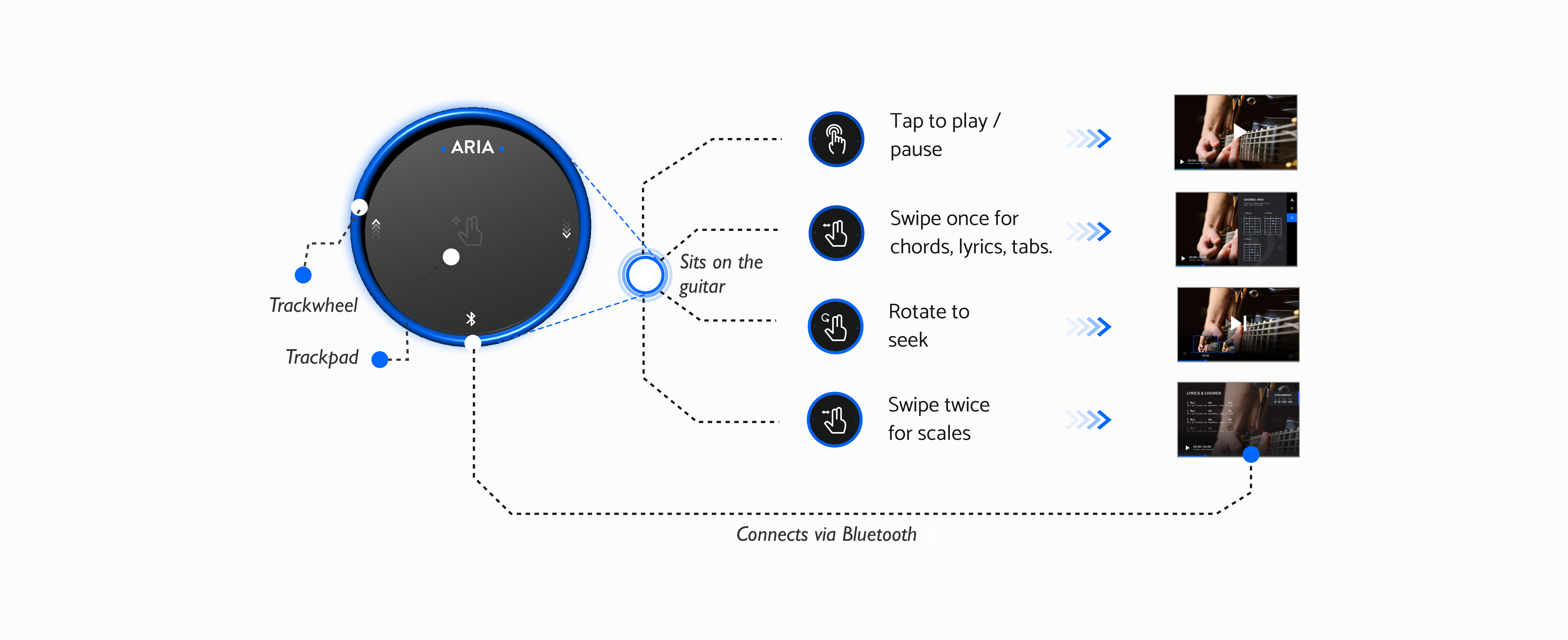
3. Desktop application design
Every guitar tutorial is in a different format depending on the content creator. With Aria, we put the learner in control of the information they want to see at any given point. Information like chords, strumming, scales, etc. can be swiped on and off the screen as required. The predictability of finding information at the same place every time also makes the application easy to use especially when the user is concentrating on learning a song.
Final Solution
